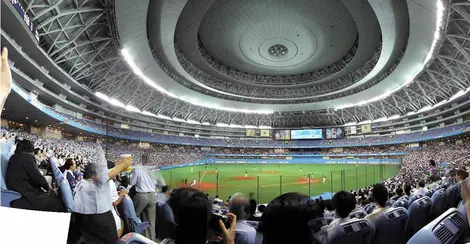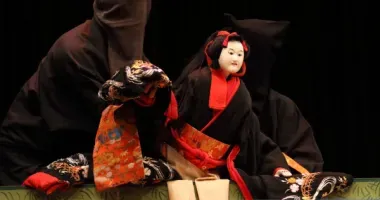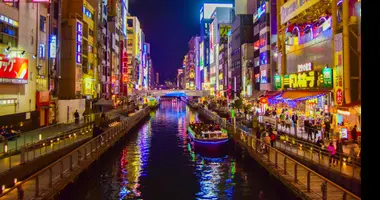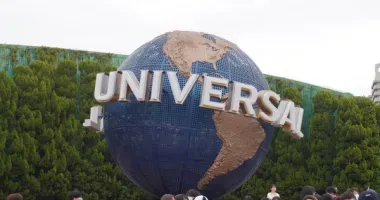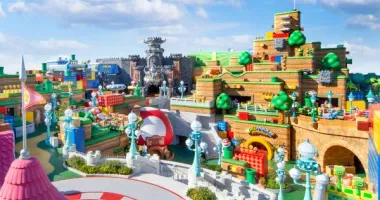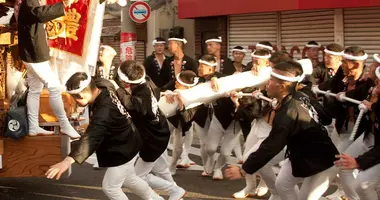Kyocera Dome Osaka: a multi-purpose stadium in the heart of Osaka
- Published on : 08/06/2024
- by : R.A
- Youtube
In the heart of the vibrant city of Osaka stands a building that never fails to attract attention: the Kyocera Dome Osaka. This covered stadium, with its futuristic silhouette reminiscent of a giant flying saucer, is much more than just a baseball field. A true symbol of the Kansai metropolis' dynamism, it embodies Osaka's bold architecture and innovative spirit. Inaugurated in 1997, the Kyocera Dome has become a must-see venue for sports fans and music and entertainment enthusiasts alike. Let's delve into the fascinating world of this emblematic stadium, which has marked Osaka's recent history and continues to be at the heart of its cultural and sporting life.
History and features of the Kyocera Dome Osaka
Kyocera Dome Osaka, formerly known as Osaka Dome, was built in a very special context. Construction began in January 1992, in the aftermath of the great Kobe earthquake. Conceived as a symbol of resilience and modernity, the stadium was inaugurated on March 1, 1997. Its bold architecture, designed by Nikken Sekkei, Ltd. is a veritable architectural UFO, dominating the area in which it is located.
With a capacity of 36,477 for baseball games and up to 55,000 for other events, the Kyocera Dome is a first-class sports facility. Its impressive dimensions make it an ideal playing field for baseball: 100 meters for left and right fields, and 122 meters for center field. The stadium is fully covered, enabling events to be held all year round, whatever the weather conditions.
The cost of building this architectural gem was 49.8 billion yen, a considerable investment that testifies to Osaka's ambition to equip itself with a world-class infrastructure. Today, the Kyocera Dome is owned by Osaka City Dome Co, Ltd, a subsidiary of the Orix Group.
The Kyocera Dome Osaka: an iconic baseball stadium
The Kyocera Dome Osaka is first and foremost the home of the Orix Buffaloes, the city's professional baseball team. Since 2005, following the merger of the Orix Blue Wave and the Osaka Kintetsu Buffaloes, the Orix Buffaloes have made the Kyocera Dome their main playing field. On match nights, the atmosphere is electric, with over 36,000 fans turning out to support their team.
The stadium also hosts matches for the Hanshin Tigers, the other iconic team of the Kansai region. Although their main stadium is Koshien Stadium, the Tigers play their season-opening and August games at Kyocera Dome, when Koshien is used for high-school baseball tournaments.
The importance of baseball in Osaka's culture is reflected in the unique atmosphere that reigns at the Kyocera Dome during games. The fans, renowned for their passion and enthusiasm, create an incomparable atmosphere that perfectly embodies the spirit of Osaka. The stadium has become a place where the city's sporting identity is forged, reinforcing its status as Tokyo's rival in professional baseball.
A versatile entertainment venue: concerts and events
In addition to its sporting vocation, the Kyocera Dome Osaka has established itself as a major entertainment venue in the Kansai region. Its configuration and acoustics make it a popular concert venue for international and Japanese artists alike. Music legends such as the Rolling Stones, Madonna, Paul McCartney, Céline Dion and David Bowie have performed here, providing memorable shows for Osaka residents and visitors alike.
The stadium also hosts a variety of other cultural and entertainment events. Exhibitions, trade shows and even combat sports events are regularly held here. For example, the 2005 Pride Total Elimination, a mixed martial arts tournament, was held here, demonstrating the versatility of the infrastructure.
This diversity of use makes the Kyocera Dome a veritable cultural crossroads where sports, music and entertainment enthusiasts meet. It thus plays a crucial role in Osaka's cultural life, contributing to its dynamism and tourist appeal.
Access and practical information for visiting Kyocera Dome Osaka
Kyocera Dome Osaka enjoys excellent accessibility thanks to its central location and numerous public transport options. Here are the main means of access:
- Nagahori Tsurumiyokuchi line: get off at Domumae Chiyozaki station, the stadium is just a 3-minute walk away.
- JR Loop line: from Taisho station, it's a 7-minute walk.
- Hanshin Namba line: Domumae station is a 3-minute walk from the stadium.
For visitors wishing to explore the stadium behind the scenes, guided tours are available (1,000 yen for adults). These tours allow you to discover areas that are usually inaccessible, such as the changing rooms and bullpens where pitchers warm up.
Opening times vary according to the event, but the stadium is generally open from 11am to 7pm. It is closed on Mondays, except for special events. For further information or to book tickets, please contact the stadium on 06-6586-0106 or visit the official website: http://www.kyoceradome-osaka.jp/
The Kyocera Dome's economic and cultural impact on the city of Osaka
Kyocera Dome Osaka plays a crucial role in the local economy. On match and concert days, the surrounding businesses are very busy, generating significant economic spin-offs. Local restaurants, bars and hotels benefit greatly from this influx of visitors.
Culturally, the stadium has become a symbol of pride for the people of Osaka. It embodies the spirit of innovation and the city's ambition to rival Tokyo. The Kyocera Dome has also helped strengthen Osaka's image as a tourist destination, attracting visitors from all over the world to attend world-class sporting events and concerts.
The stadium's impact extends beyond its walls. It has stimulated urban development in its immediate vicinity, contributing to the revitalization of this part of the city. Moreover, as a major gathering place, it plays an important role in strengthening the social fabric of the community, offering Osaka's residents a space in which to share memorable collective experiences.
Future plans and challenges for Kyocera Dome Osaka
As Kyocera Dome Osaka prepares to celebrate its quarter-century of existence, a number of challenges and opportunities lie ahead. One of the main challenges is to maintain the stadium's modernity and attractiveness in the face of competition from newer infrastructures. Renovations and technological upgrades are regularly considered to ensure that the Dome remains at the cutting edge in terms of spectator comfort and experience.
In the context ofExpo 2025, to be held in Osaka, the Kyocera Dome could play an important role in hosting events linked to this international event. This represents a unique opportunity to showcase the stadium and reinforce its status as the city's architectural and cultural icon.
Finally, in a post-pandemic world, the Kyocera Dome will have to adapt to new health safety standards while preserving the unique experience it offers its visitors. Integrating innovative technologies to improve hygiene and spectator flow management will be crucial to ensuring the stadium's future as a safe and welcoming gathering place.
The Kyocera Dome Osaka, with its rich history and central role in the city's cultural and sporting life, is much more than just a stadium. It embodies the spirit of Osaka: innovative, dynamic and forward-looking. As the city prepares to host Expo 2025, there's no doubt that this architectural jewel will continue to shine and amaze visitors from all over the world, while remaining deeply rooted in the hearts of Osakans.
Address, timetable & access
Address
Phone
06-6586-0106Access
Nagahori Tsurumiyokuchi line: 3-minute walk from Domumae Chiyozaki Station.
JR Loop line: 7-minute walk from Taisho Station.
Hanshin Namba line: 3-minute walk from Domumae Station.Website
http://www.kyoceradome-osaka.jp/




